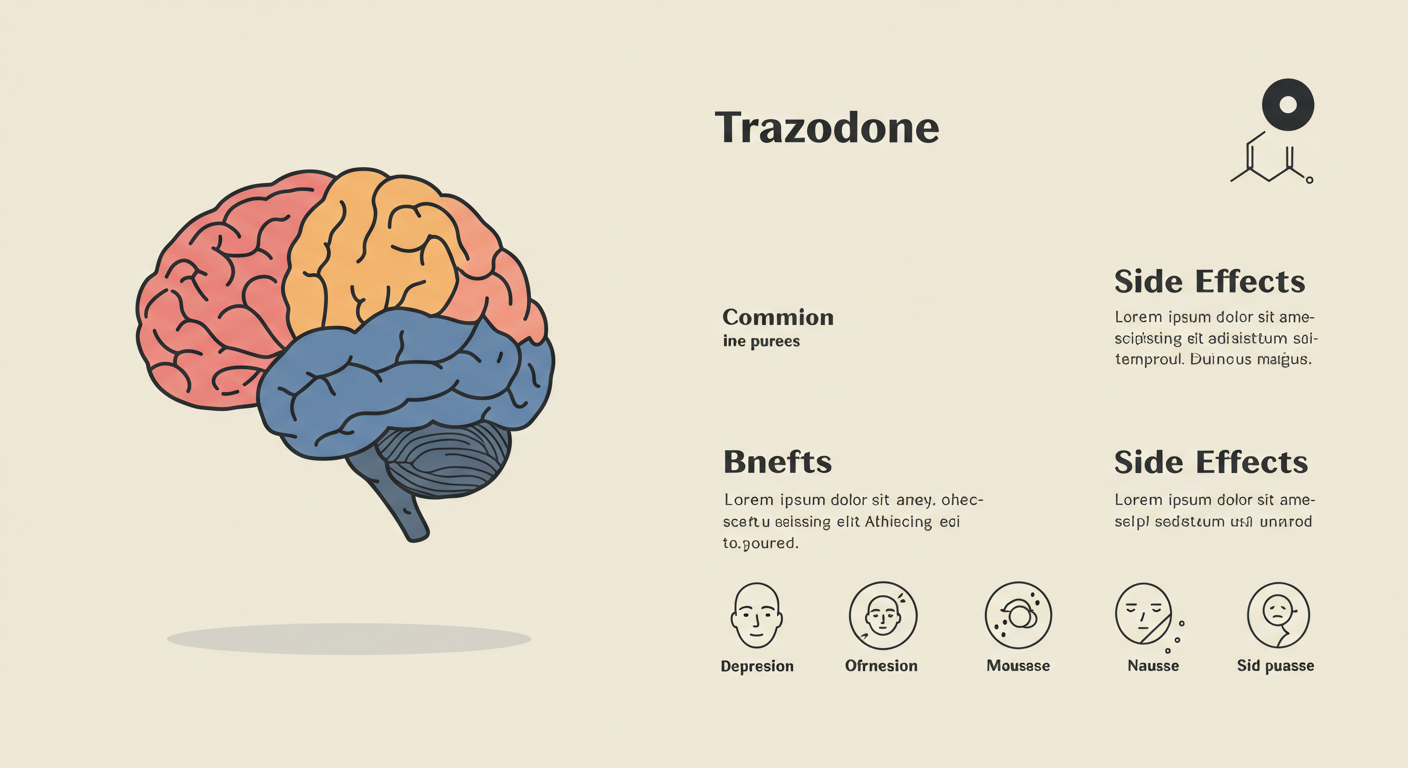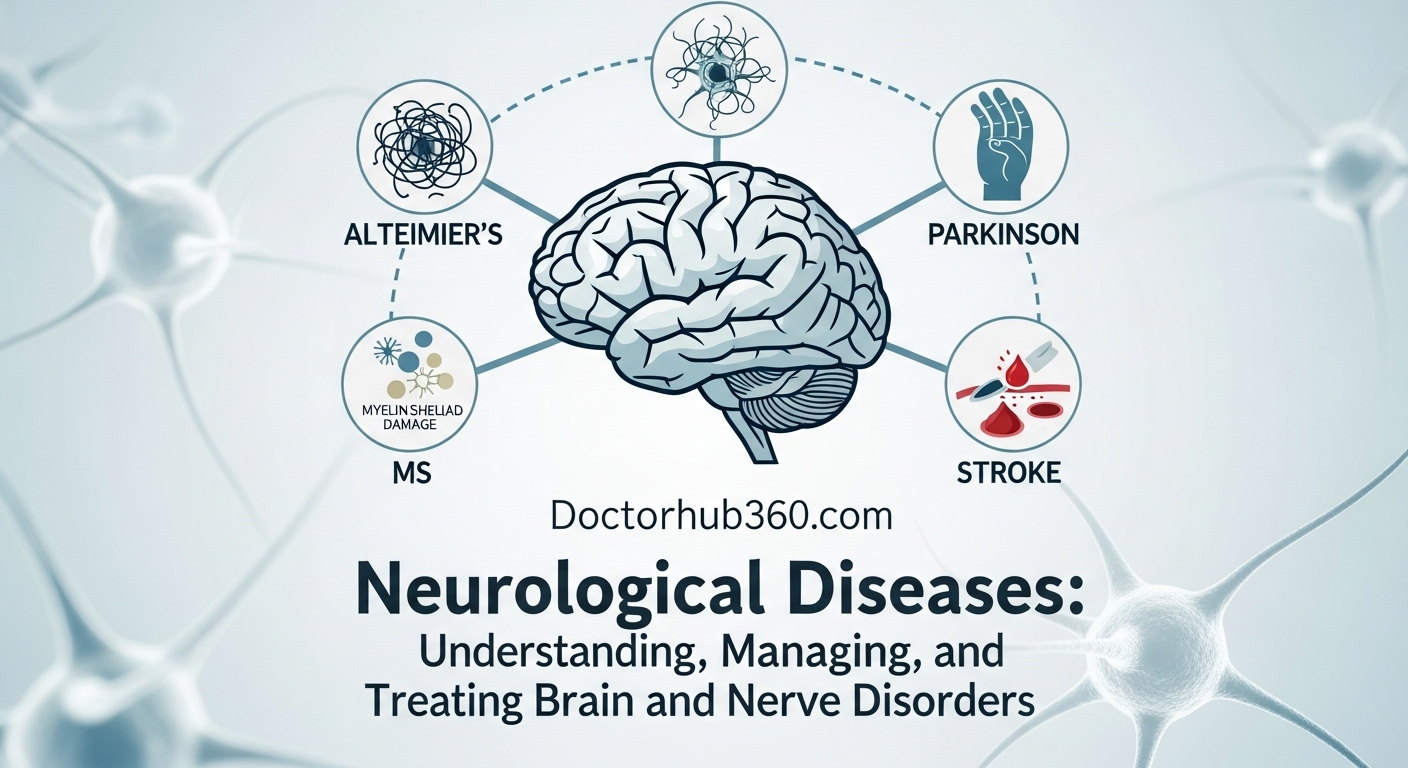Health & Fitness
Trazodone: Uses, Benefits, and Side Effects

Trazodone might not be the first name that comes to mind when you think of medications, but it plays a significant role in managing various mental health conditions. Originally developed as an antidepressant, this versatile medication has evolved into a popular option for treating insomnia and anxiety disorders too. Whether you’re searching for relief from persistent low moods or struggling to get a good night’s sleep, Trazodone could offer the solution you’ve been looking for. Let’s dive deeper into how Trazodone works, its benefits, potential side effects, and alternatives that may better suit your needs.
How Trazodone Works in the Body
Trazodone functions primarily as a serotonin antagonist and reuptake inhibitor. By blocking certain serotonin receptors, it increases the availability of this important neurotransmitter in the brain. This action helps to elevate mood and alleviate feelings of depression.
Additionally, trazodone has sedative properties that can aid in inducing sleep. Its influence on serotonin levels plays a critical role in regulating various sleep cycles. Therefore, many patients find relief from insomnia symptoms while experiencing an improvement in their overall mood.
The drug is metabolized by the liver and its effects can vary based on individual biochemistry. As such, some may experience faster relief than others. Understanding these mechanisms provides insight into how trazodone fits into treatment plans for mental health conditions like depression and anxiety.
Uses of Trazodone – Treatment of Depression and Insomnia
Trazodone is primarily known for its effectiveness in treating depression. By influencing serotonin levels, it helps to stabilize mood and alleviate feelings of sadness or hopelessness. For many individuals struggling with major depressive disorder, Trazodone can be a valuable part of their treatment plan.
In addition to its antidepressant properties, Trazodone is widely used as a sleep aid. Patients often find that this medication promotes restful sleep without the grogginess associated with some traditional sleeping pills. This dual action makes it particularly appealing for those who face both insomnia and depression simultaneously.
Doctors frequently prescribe Trazodone when other treatments fall short. Its unique mechanism offers an option for those seeking relief from persistent depressive symptoms while also addressing sleepless nights effectively. This versatility contributes significantly to its popularity among healthcare providers and patients alike.
Benefits of Trazodone
Trazodone offers several notable benefits for those struggling with mental health issues. One of its primary uses is as a treatment for depression, effectively boosting mood and improving overall emotional well-being.
Many individuals also find relief from insomnia when taking Trazodone. Its sedative properties help promote restful sleep, making it an appealing option for those who struggle to fall or stay asleep.
Additionally, Trazodone can aid in managing anxiety disorders. By stabilizing mood and providing a calming effect, it assists users in navigating daily stressors more easily.
The medication’s versatility makes it beneficial not just as an antidepressant but also as a holistic approach to enhance quality of life across various conditions.
Side Effects and Risks of Taking Trazodone
Trazodone, like any medication, comes with its share of side effects and risks. Many users may experience drowsiness, dizziness, or dry mouth shortly after starting treatment. These symptoms can be particularly pronounced when adjusting to a new dosage.
Some individuals might notice gastrointestinal issues such as nausea or constipation. While these are generally mild, they can affect daily life if persistent.
More serious side effects warrant attention. This includes potential allergic reactions that could manifest as rash or swelling. It’s crucial to watch for changes in mood or behavior since trazodone has been linked to suicidal thoughts in some cases.
Additionally, combining trazodone with other medications can increase the risk of adverse reactions. Always consult a healthcare provider before making adjustments to your regimen or if you have concerns about interactions with other drugs you may be taking.
Alternatives to Trazodone for Treating Depression and Insomnia
When exploring alternatives to Trazodone for treating depression and insomnia, several options exist. Many individuals turn to selective serotonin reuptake inhibitors (SSRIs), which often help manage mood disorders effectively.
Cognitive Behavioral Therapy (CBT) is another powerful alternative. This therapeutic approach addresses negative thought patterns and behaviors, providing tools to combat depression and improve sleep hygiene.
Natural remedies also have their place. Herbal supplements like valerian root or chamomile may promote relaxation without the side effects associated with prescription medications.
Lifestyle changes can play a significant role as well. Regular exercise, mindfulness practices, and maintaining a consistent sleep schedule contribute positively to mental health and overall well-being.
Consult your healthcare provider about adjunctive treatments such as melatonin supplements or other medications that target specific symptoms of anxiety or sleep disturbances. Each individual’s needs vary; finding the right approach requires personalized attention.
How Does Trazodone Work?
Trazodone primarily acts as a serotonin antagonist and reuptake inhibitor (SARI). This means it influences the levels of serotonin in the brain, a neurotransmitter crucial for mood regulation. By inhibiting its reabsorption, trazodone increases serotonin availability.
The unique mechanism also targets certain receptors that help alleviate symptoms of depression and anxiety. It enhances overall mood while promoting relaxation, making it effective for those struggling with sleep disturbances.
When taken, trazodone is rapidly absorbed into the bloodstream. It reaches peak concentration within a few hours. Patients often experience improved sleep patterns shortly after taking their prescribed dose.
Additionally, its sedative properties make it particularly useful for people fighting insomnia due to underlying mental health issues. The calming effects can lead to more restful nights without significant grogginess upon waking.
Benefits of Trazodone
Trazodone offers several benefits for those dealing with mood and sleep disorders. One of its primary advantages lies in its effectiveness as an antidepressant. Many individuals find relief from depressive symptoms, helping to restore their quality of life.
Additionally, Trazodone is widely recognized for aiding insomnia sufferers. Its sedative properties help users fall asleep faster and enjoy more restful nights. This dual action on both mood and sleep makes it a popular choice among healthcare providers.
Moreover, Trazodone can assist in managing anxiety disorders. For many patients, the calming effects contribute to reducing feelings of stress and agitation throughout the day.
Patients appreciate that Trazodone often has fewer side effects compared to stronger medications prescribed for depression or anxiety. This aspect makes it a favorable option for long-term treatment plans without significant impact on daily functioning.
A. Treatment for Depression
Trazodone has emerged as a valuable option for treating depression. Its unique mechanism of action sets it apart from traditional antidepressants. By influencing serotonin levels in the brain, Trazodone helps to stabilize mood and reduce feelings of sadness.
Patients often find that this medication alleviates their depressive symptoms effectively. It can enhance emotional well-being and improve overall quality of life. Unlike some other antidepressants, Trazodone is frequently chosen for its lower risk of dependency.
Another benefit is its relatively mild side effect profile compared to more potent alternatives. This makes it appealing for those who may be sensitive to harsh medications.
For many individuals struggling with depression, incorporating Trazodone into their treatment plan offers hope and relief when they need it most. The journey toward recovery can be complex, but this medication plays a crucial role in many success stories.
B. Relief from Insomnia
Trazodone is often prescribed for those struggling with insomnia. Its sedative properties can help individuals fall asleep faster and improve overall sleep quality.
Many patients find that taking trazodone before bedtime leads to a more restful night. The medication works by balancing chemicals in the brain, promoting relaxation and drowsiness.
Unlike some traditional sleep aids, trazodone does not typically lead to dependence when used under medical supervision. This makes it a favorable option for people who need consistent support without the risk of addiction.
Users have reported fewer awakenings throughout the night, allowing them to wake up feeling refreshed. It’s essential to work closely with a healthcare provider to determine the right dosage for optimal effectiveness while minimizing side effects.
C. Management of Anxiety Disorders
Trazodone is not only effective for depression and insomnia; it also plays a role in managing anxiety disorders. Many patients report significant relief from symptoms of anxiety when taking this medication.
The mechanism behind this benefit lies in trazodone’s ability to modulate serotonin levels in the brain. Enhanced serotonin activity can lead to improved mood stability, which often translates to reduced anxiety.
Individuals with generalized anxiety disorder or social anxiety may find that trazodone alleviates their constant feelings of worry and apprehension. It offers a calming effect, allowing users to feel more centered throughout their day.
Additionally, its sedative properties can help those who struggle with nighttime anxieties, promoting better sleep quality. This creates a positive feedback loop where improved rest further aids stress management during waking hours.
Side Effects of Trazodone
Trazodone, while effective for many, does come with its share of side effects. Commonly reported issues include drowsiness, dry mouth, and dizziness. These can be bothersome but often diminish as the body adjusts to the medication.
Some individuals may experience gastrointestinal disturbances like nausea or constipation. This can impact daily routines and comfort levels.
More serious side effects are rare but should not be ignored. Symptoms such as irregular heartbeats or fainting episodes warrant immediate medical attention. It’s essential to monitor your reactions when starting Trazodone.
Additionally, there’s a risk of serotonin syndrome if combined with certain medications. Signs include confusion, rapid heartbeat, and muscle rigidity—these require urgent care.
Always discuss potential risks with your healthcare provider before beginning treatment. Understanding both common and serious side effects helps manage expectations effectively.
A. Common Side Effects
Trazodone can be effective, but like any medication, it comes with potential side effects. Many individuals may experience drowsiness as one of the most common reactions. This sedative effect is why it’s often prescribed for insomnia.
Some users report dry mouth or an unpleasant taste after taking trazodone. Staying hydrated can help alleviate these symptoms.
Additionally, dizziness and lightheadedness are not uncommon, especially when standing up quickly. It’s essential to rise slowly to avoid feeling faint.
Gastrointestinal issues such as nausea or constipation may also occur in some patients. These effects vary in intensity from person to person.
Headaches might pop up now and then after starting treatment. Monitoring how your body reacts during the initial days on trazodone is crucial for managing these common side effects effectively.
B. Serious Side Effects and Precautions
While Trazodone can be effective, it’s important to understand its serious side effects. Some users may experience severe allergic reactions. Signs like rash, itching, or swelling should prompt immediate medical attention.
Cardiovascular issues can also arise. A rapid heartbeat or irregular heart rhythms are potential concerns that require monitoring by a healthcare professional.
Another critical aspect is the risk of serotonin syndrome. This rare but life-threatening condition occurs when there’s too much serotonin in the brain and may present with symptoms like agitation, hallucinations, or loss of coordination.
For those with a history of seizures, caution is advised since Trazodone could lower the seizure threshold. Always discuss your full medical history with your doctor before beginning treatment.
Regular check-ups are essential to assess any developing complications as you adjust to this medication.
Alternatives to Trazodone
When exploring alternatives to Trazodone, several options can be considered. Selective serotonin reuptake inhibitors (SSRIs) like fluoxetine and sertraline have gained popularity for treating depression. They target the same neurotransmitter systems but often come with a different side effect profile.
For those struggling with insomnia, non-benzodiazepine sleep aids such as zolpidem or eszopiclone may provide relief without some of the risks associated with antidepressants.
Cognitive-behavioral therapy (CBT) also offers effective strategies for managing anxiety and sleep issues. It focuses on changing negative thought patterns that contribute to these conditions.
Herbal supplements like valerian root or melatonin are natural alternatives worth considering for sleep troubles. These remedies can support relaxation without many pharmaceutical side effects.
Lifestyle changes, including regular exercise and improved sleep hygiene, also play a crucial role in managing symptoms effectively.
Is Trazodone Right
Determining if Trazodone is the right choice for you involves several factors. First, consider your specific symptoms. If you’re dealing with depression or insomnia, this medication may offer significant relief.
Consulting with a healthcare professional is crucial. They can evaluate your medical history and current health conditions to ensure safety.
Trazodone’s sedative properties make it appealing for those struggling with sleep issues. However, it might not be suitable for everyone, particularly individuals with certain heart conditions or those who are pregnant.
It’s also important to weigh how Trazodone interacts with other medications you may be taking. Understanding these interactions will help tailor a treatment plan that fits your needs best.
Listen to your body after starting any new medication. Monitoring side effects closely can provide insights into whether Trazodone enhances your quality of life or if adjustments need to be made.
Conclusion
Trazodone has emerged as a versatile medication for many individuals seeking relief from mental health challenges. Its ability to address both depression and insomnia makes it an appealing option for those struggling with these issues.
However, the journey with Trazodone is not one-size-fits-all. Each person’s experience can vary significantly based on their unique circumstances. Understanding the potential benefits along with possible side effects is crucial in making informed decisions.
Consultation with a healthcare professional can guide you toward the best treatment path tailored specifically to your needs. Remember that there are alternatives available if Trazodone doesn’t feel right for you.
Prioritize your well-being and seek out effective options that align with your personal health goals. The path to better mental health often involves exploration, support, and awareness of what works best for you.
FAQs
When considering Trazodone as a treatment option, many questions often arise. Here are some frequently asked questions to help clarify its use and effectiveness.
What is Trazodone used for?
Trazodone is primarily prescribed for treating depression but is also commonly used to manage insomnia and anxiety disorders.
How does Trazodone work in the body?
Trazodone functions by inhibiting the reuptake of serotonin, which helps improve mood and promote relaxation. It can have sedative effects that make it useful for those struggling with sleep issues.
What should I do if I miss a dose of Trazodone?
If you miss a dose, take it as soon as you remember unless it’s close to your next scheduled dose. Do not double up on doses.
Can Trazodone be taken long-term?
While some patients may require long-term treatment with Trazodone, it’s essential to consult your healthcare provider about the best approach tailored to your needs.
Are there any food or drug interactions with Trazodone?
Yes, certain medications and foods can interact with Trazodone. Always share your complete medication list with your doctor before starting this medication.
Is it safe to stop taking Trazodone suddenly?
Discontinuing Trazodone abruptly can lead to withdrawal symptoms or worsening of depression or anxiety. It’s crucial to follow your doctor’s guidance when altering dosage or stopping usage altogether.
Who should avoid taking Trazodone?
People who have allergies to trazodone or other similar medications should avoid using it. Additionally, individuals with specific health conditions may need alternative treatments; always discuss these concerns with a healthcare professional.
Understanding these aspects of trazodone will enable informed decisions about its appropriateness based on individual health needs and circumstances.
Health & Fitness
TheHealthyPrimate.org: Redefining Modern Wellness and Mental Health Awareness

In today’s fast-paced world, health and well-being are more important than ever. TheHealthyPrimate.org is an innovative platform that focuses on helping people achieve balance in mind, body, and spirit. With a growing global community, TheHealthyPrimate.org offers tools, resources, and inspiration for individuals who seek to live healthier and more meaningful lives.
The platform combines wellness education, mindfulness training, and motivational guidance to create a sustainable approach to health. Whether you are aiming to reduce stress, improve physical fitness, or enhance emotional resilience, TheHealthyPrimate.org provides valuable insights and practical solutions tailored to your personal growth journey.
What is TheHealthyPrimate.org?
TheHealthyPrimate.org is more than just a wellness website — it’s a holistic initiative created to promote physical vitality, mental clarity, and emotional balance. It focuses on empowering people to take proactive steps toward improving their health and happiness.
The platform provides articles, workshops, and personal development programs that cover a wide range of topics, including nutrition, mindfulness, fitness, and emotional wellness. The goal of TheHealthyPrimate.org is to help users build healthy habits and maintain balance in a stressful modern lifestyle.
| Core Focus | Description |
|---|---|
| Health Education | Guides users on nutrition, exercise, and mindfulness practices |
| Community Support | Connects individuals striving for better health |
| Personal Development | Encourages self-improvement through motivation and positive psychology |
| Holistic Living | Promotes balance between physical, emotional, and mental health |
This balanced approach makes TheHealthyPrimate.org an essential resource for anyone looking to transform their lifestyle.
The Mission and Vision of TheHealthyPrimate.org
The mission of TheHealthyPrimate.org is simple yet powerful — to help people achieve optimal well-being through education, inspiration, and community. The platform envisions a world where everyone has access to reliable information about wellness and mental health.
Its vision revolves around:
-
Promoting mindfulness in everyday life.
-
Reducing the stigma surrounding mental health.
-
Inspiring healthy living through natural and sustainable habits.
-
Empowering people to take control of their emotional and physical health.
Through its mission, TheHealthyPrimate.org encourages individuals to rediscover happiness and live with purpose.
Core Values of TheHealthyPrimate.org
The foundation of TheHealthyPrimate.org rests on a few key principles that define its philosophy:
| Core Value | Explanation |
|---|---|
| Authenticity | Delivering honest and practical wellness advice |
| Inclusivity | Making health information accessible to everyone |
| Empowerment | Helping individuals take charge of their well-being |
| Sustainability | Promoting eco-conscious and long-term lifestyle changes |
These values reflect the commitment of TheHealthyPrimate.org to guide people toward balanced and mindful living.
Programs and Resources on TheHealthyPrimate.org
The resources on TheHealthyPrimate.org are designed to cover every aspect of personal health. From mental resilience to physical performance, it provides structured programs that help users at all stages of their wellness journey.
| Program Category | Focus Area | Benefits |
|---|---|---|
| Mindfulness Training | Meditation, breathing techniques | Reduces stress, increases focus |
| Fitness Challenges | Strength, flexibility, endurance | Builds discipline and energy |
| Nutritional Guidance | Meal plans, superfoods, hydration tips | Boosts immunity and vitality |
| Mental Health Awareness | Stress management, self-care, therapy insights | Promotes emotional balance |
Each section of TheHealthyPrimate.org integrates practical steps and motivational stories, creating an encouraging environment for users to thrive.
TheHealthyPrimate.org and Mental Health Awareness
One of the most impactful areas where TheHealthyPrimate.org shines is mental health advocacy. In a world facing rising stress levels, burnout, and emotional challenges, this platform provides a safe space for learning and healing.
It offers educational content on topics such as anxiety management, mindfulness meditation, work-life balance, and emotional intelligence. By offering expert advice and personal stories, TheHealthyPrimate.org helps reduce stigma and normalizes open conversations around mental well-being.
Community Engagement at TheHealthyPrimate.org
Another distinctive feature of TheHealthyPrimate.org is its strong emphasis on community. It’s not just a resource platform — it’s a growing network of like-minded individuals who share the same goal: living a healthier and happier life.
The community section includes:
-
Online Discussion Forums: A space for users to exchange tips and share experiences.
-
Wellness Webinars: Live sessions with coaches and mental health experts.
-
Support Groups: Safe environments for emotional sharing and motivation.
This sense of connection fosters accountability and collective growth, making TheHealthyPrimate.org much more than an informational website.
TheHealthyPrimate.org vs Other Wellness Platforms
In the competitive wellness landscape, TheHealthyPrimate.org differentiates itself by combining modern science with holistic wisdom.
| Feature | TheHealthyPrimate.org | Other Platforms |
|---|---|---|
| Focus | Mind-body balance and mental wellness | Primarily physical fitness |
| Community | Global wellness network | Limited interaction |
| Programs | Holistic and sustainable | Often short-term |
| Affordability | Free and low-cost resources | Subscription-based |
| Expert Access | Coaches, therapists, and trainers | Usually restricted |
This comparison highlights why TheHealthyPrimate.org is becoming the preferred choice for people looking for complete wellness transformation.
Expert Advice and Wellness Insights on TheHealthyPrimate.org
The platform’s content is backed by health coaches, nutritionists, and mindfulness practitioners who contribute articles, workshops, and expert interviews.
Some of the most popular wellness topics covered include:
-
The science of stress reduction.
-
The role of diet in mental health.
-
Building healthy daily habits.
-
Emotional detox and inner peace.
With expert guidance transforms health knowledge into actionable steps, making personal growth achievable for everyone.
User Experience and Navigation
User experience is a key element of TheHealthyPrimate.org. The website’s interface is clean, intuitive, and mobile-friendly, ensuring easy access for users across all devices.
| Design Element | Purpose |
|---|---|
| Search Function | Quickly find articles or programs |
| Responsive Layout | Seamless experience on all devices |
| Blog Section | Regular updates on wellness trends |
| Member Dashboard | Personalized progress tracking |
These user-friendly features enhance engagement and encourage visitors to return regularly for new content and motivation.
Why TheHealthyPrimate.org is Important in Today’s World
The need for platforms like is more urgent than ever. In an age dominated by stress, screen time, and unhealthy lifestyles, the platform reminds us to reconnect with ourselves.
It teaches balance, encourages gratitude, and inspires mindfulness — qualities that are often overlooked in our daily lives. By emphasizing both physical and mental health, TheHealthyPrimate.org contributes to creating a more emotionally intelligent and self-aware generation.
Future Plans and Expansion of TheHealthyPrimate.org
Looking ahead plans to expand its offerings by launching mobile applications, guided wellness podcasts, and international partnerships with health organizations.
Future goals include:
-
Developing customized wellness programs for corporate clients.
-
Introducing mental health certifications and online coaching courses.
-
Hosting global events and wellness retreats.
-
Collaborating with universities for research-based wellness projects.
These steps reflect the platform’s long-term commitment to improving health outcomes worldwide.
Conclusion: TheHealthyPrimate.org and the Journey to Better Living
In conclusion stands as a symbol of hope and transformation in the wellness landscape. Its holistic approach to health — combining physical fitness, mental awareness, and community support — offers a comprehensive path toward a fulfilling life.
By merging education, motivation, and compassion empowers individuals to take control of their wellness journey. Whether you are starting fresh or looking to deepen your existing routine, this platform provides all the tools needed for lasting health and happiness.
Health & Fitness
Prostavive Colibrim – The Natural Key to Restoring Men’s Vitality and Prostate Health

As men get older, staying healthy becomes a growing challenge, especially when it comes to prostate wellness and overall energy. Many men quietly deal with discomfort, fatigue, or frequent trips to the bathroom, assuming it’s just part of aging. But that’s not entirely true. Natural solutions like Prostavive Colibrim are changing that perspective — offering a way to support the body naturally, improve comfort, and restore confidence.
Prostavive Colibrim isn’t just another supplement on the shelf; it’s designed with care, using herbal ingredients that work with your body to promote balance, support the prostate, and help men feel more like themselves again.
Understanding What Prostavive Colibrim Really Is
At its core, Prostavive Colibrim is a natural supplement formulated to maintain prostate health and improve urinary comfort. It’s made with plant-based extracts, antioxidants, and minerals that help reduce inflammation and support hormonal balance. Unlike synthetic products that mask symptoms, Prostavive Colibrim aims to strengthen the body’s natural functions, helping men regain long-term wellness.
It’s particularly popular among men over 40 who experience issues like frequent urination, sluggish energy, or reduced confidence. By working gently with your system, Prostavive Colibrim supports both physical and emotional well-being.
Why Men Are Turning to Prostavive Colibrim
The popularity of Prostavive Colibrim isn’t just marketing hype — it’s based on real results and real relief. Men are drawn to this supplement because it represents a healthier approach to aging. It offers several important advantages:
-
Natural and safe ingredients with minimal side effects.
-
Support for urinary flow and reduced nighttime trips to the bathroom.
-
Improved stamina and focus through better energy balance.
-
Enhanced hormonal support, particularly for testosterone stability.
-
Greater confidence and quality of life, especially in daily comfort.
Men who use Prostavive Colibrim often describe it as a quiet but powerful shift in how they feel — subtle at first, but noticeable over time.
Key Ingredients That Make Prostavive Colibrim Effective
The success of comes from its combination of traditional herbal wisdom and modern nutrition science. Here are the key ingredients that make it stand out:
-
Saw Palmetto: Long known for promoting healthy urinary flow and supporting prostate size balance.
-
Beta-Sitosterol: A plant compound shown to improve urinary comfort and bladder strength.
-
Pumpkin Seed Extract: Rich in zinc and essential fatty acids that nourish the prostate and reduce inflammation.
-
Lycopene: A powerful antioxidant that helps protect prostate cells from oxidative stress.
-
Zinc and Selenium: These minerals support hormonal balance and overall male vitality.
-
Vitamin E: Strengthens immunity while supporting reproductive and cellular health.
Together, these ingredients make a comprehensive wellness formula — not just for the prostate, but for men’s total vitality.
How Prostavive Colibrim Works Inside the Body
The real magic of lies in how it works internally. It doesn’t just provide nutrients — it helps reset your system’s natural equilibrium.
-
It reduces inflammation in the prostate and surrounding tissues.
-
It improves circulation in the lower abdomen, enhancing comfort and function.
-
It balances hormones, particularly DHT (a derivative of testosterone that can enlarge the prostate).
-
It strengthens bladder muscles, reducing urgency and improving urine flow.
-
It boosts energy and focus, helping you feel more active and alert throughout the day.
When taken consistently, Prostavive Colibrim helps your body operate more efficiently, making daily life smoother and more comfortable.
Everyday Benefits of Using Prostavive Colibrim
Users of often notice multiple benefits after a few weeks of consistent use. These include:
-
Fewer interruptions during sleep due to reduced bathroom visits.
-
Easier and stronger urinary flow.
-
Better focus and energy throughout the day.
-
A renewed sense of confidence and overall wellness.
-
Less discomfort or heaviness in the lower abdomen.
It’s these small but meaningful changes that help men feel more in control of their health and vitality.
What Makes Prostavive Colibrim Different From Other Supplements
There’s no shortage of prostate supplements available, but separates itself through quality and integrity. Its formula uses natural, clinically backed ingredients without unnecessary fillers or artificial chemicals.
Another difference is consistency — many supplements promise results but deliver inconsistently. Prostavive Colibrim is produced under strict quality control, ensuring purity and potency in every capsule.
Most importantly, it’s not designed just for quick relief; it’s built for long-term wellness support.
Tips for Getting the Best Results with Prostavive Colibrim
If you decide to include in your routine, a few simple steps can enhance its effectiveness:
-
Take it daily, ideally with a meal for better absorption.
-
Stay hydrated, as water helps the nutrients circulate efficiently.
-
Maintain a balanced diet, especially foods rich in antioxidants and fiber.
-
Stay active, since exercise supports circulation and hormonal balance.
-
Be consistent, as natural supplements work best with regular use over time.
By following these habits, men often find the results of Prostavive Colibrim even more satisfying.
What Users Are Saying About Prostavive Colibrim
The testimonials around speak volumes. Men from different age groups have shared stories of better comfort, renewed energy, and improved well-being. Many mention that after just a few weeks, their sleep quality improved due to fewer nighttime interruptions.
While experiences vary, most users agree that it brings a noticeable difference without the side effects that often come with prescription drugs.
Final Thoughts on Prostavive Colibrim
When it comes to men’s health, prevention and natural care matter more than ever provides a holistic way to support the prostate, improve comfort, and help men stay energetic and confident.
It’s not a miracle pill, but rather a carefully designed supplement that works steadily with your body. For those looking to age gracefully while maintaining their strength and well-being, Prostavive Colibrim could be a wise and empowering choice.
Health & Fitness
Doctorhub360.com Neurological Diseases: Understanding, Managing, and Treating Brain and Nerve Disorders

The human brain and nervous system are among the most complex parts of the body, responsible for controlling every thought, movement, and sensation. When something goes wrong within this intricate network, it can lead to serious and often life-changing conditions. Doctorhub360.com Neurological Diseases is an online platform designed to educate, inform, and support patients, caregivers, and medical professionals in understanding various neurological disorders and their treatments.
By offering detailed medical insights, expert opinions, and the latest research, Doctorhub360.com serves as a trusted source for those seeking clarity about conditions that affect the brain, spinal cord, and peripheral nerves.
What Is Doctorhub360.com Neurological Diseases?
Doctorhub360.com Neurological Diseases is a specialized section of the Doctorhub360 medical information platform. It focuses on educating people about disorders that affect the nervous system, including both common and rare neurological conditions. The platform combines medical expertise with accessible language, making it easier for patients and families to understand diagnoses, symptoms, and available treatments.
Doctorhub360.com’s mission is to close the gap between patients and healthcare providers through knowledge — empowering individuals to make informed decisions about their health.
The Importance of Understanding Neurological Diseases
Neurological diseases are conditions that disrupt the normal functioning of the nervous system. These disorders can range from mild issues like migraines to severe conditions such as Parkinson’s disease, Alzheimer’s disease, or multiple sclerosis.
By exploring Doctorhub360.com Neurological Diseases, individuals can:
-
Learn about early warning signs and symptoms
-
Understand diagnostic procedures and treatment options
-
Access preventive health tips and lifestyle guidance
-
Stay informed with the latest medical research and innovations
This information can make a crucial difference in early detection and effective management of neurological conditions.
Common Neurological Diseases Covered by Doctorhub360.com
Doctorhub360.com provides in-depth coverage of various neurological disorders, including causes, symptoms, and treatment approaches. Below are some of the key conditions highlighted on the platform:
1. Alzheimer’s Disease
A progressive brain disorder that affects memory and thinking abilities, Alzheimer’s disease is one of the most common topics on Doctorhub360.com Neurological Diseases. The site explains how it develops, risk factors, and the current research on slowing its progression.
2. Parkinson’s Disease
This movement disorder impacts coordination and balance. Doctorhub360.com shares valuable information on the latest treatment options, including medications, physical therapy, and ongoing clinical studies.
3. Multiple Sclerosis (MS)
MS is an autoimmune condition that damages the protective covering of nerve fibers. On Doctorhub360.com, readers can learn how lifestyle changes and treatment plans can help manage symptoms effectively.
4. Epilepsy
Characterized by recurring seizures, epilepsy affects people of all ages. Doctorhub360.com Neurological Diseases provides insight into seizure management, medication options, and the importance of patient safety.
5. Stroke and Transient Ischemic Attack (TIA)
Doctorhub360 explains how strokes occur, what symptoms to look for, and why immediate medical attention can save lives. Prevention tips and rehabilitation guidance are also included.
How Doctorhub360.com Neurological Diseases Helps Patients
Patients dealing with neurological conditions often face confusion and emotional distress. Doctorhub360.com bridges the gap between medical terminology and patient understanding by presenting medical content in a clear, simple format.
Educational Articles and Research Updates
Doctorhub360.com provides regular updates on clinical studies, diagnostic advancements, and treatment breakthroughs in neurological medicine.
Expert-Reviewed Information
All articles on Doctorhub360.com Neurological Diseases are reviewed by qualified healthcare professionals, ensuring accuracy and reliability.
Lifestyle and Mental Health Guidance
Living with a neurological disorder affects more than just the body — it impacts mental well-being, relationships, and quality of life. Doctorhub360 offers supportive content to help patients cope effectively.
The Role of Early Diagnosis in Neurological Health
One of the main focuses of Doctorhub360.com Neurological Diseases is early detection. Many neurological disorders can be managed more effectively when identified at an early stage.
By learning about symptoms such as tremors, vision problems, speech difficulties, or sudden changes in memory, users can recognize potential warning signs and seek professional medical help.
Doctorhub360.com emphasizes the importance of regular check-ups, brain imaging, and neurological evaluations for individuals at risk due to genetics, age, or lifestyle factors.
Innovations in Treating Neurological Diseases
Modern medicine is continuously evolving, and Doctorhub360.com Neurological Diseases highlights how technology and research are shaping the future of treatment. Some of the emerging areas include:
-
Neuroimaging and AI Diagnostics: Advanced scanning techniques and artificial intelligence are improving early diagnosis accuracy.
-
Gene Therapy: Cutting-edge research into genetic modification offers hope for treating hereditary neurological conditions.
-
Wearable Devices: Technology that tracks brain activity and movement patterns helps monitor patient health remotely.
-
Neurorehabilitation Programs: Innovative therapy methods combine physical, occupational, and speech therapies for better recovery outcomes.
Supporting Caregivers and Families
Caring for someone with a neurological condition can be emotionally challenging. Doctorhub360.com Neurological Diseases offers caregiver guides, mental health resources, and support tools designed to ease the caregiving journey.
Through shared experiences, community forums, and professional advice, caregivers can find comfort and practical tips for managing daily challenges.
Why Choose Doctorhub360.com for Neurological Information?
Doctorhub360.com has established itself as a trusted digital healthcare platform known for accuracy and accessibility. Here’s why it stands out:
-
Reliable Medical Sources: Information is verified by certified neurologists and healthcare professionals.
-
Comprehensive Coverage: Covers a wide range of neurological diseases, symptoms, and treatments.
-
Patient-Centric Design: Content is written in simple language for easy understanding.
-
Up-to-Date Information: Constantly updated with the latest medical research and discoveries.
By providing a combination of credibility and clarity, Doctorhub360.com Neurological Diseases ensures users can make informed health decisions.
Conclusion
Neurological diseases affect millions worldwide, but with accurate information and timely medical support, their impact can be managed or even reduced. Doctorhub360.com Neurological Diseases empowers individuals with knowledge — helping patients, families, and professionals navigate the complex world of brain and nerve disorders.
Through reliable data, medical expertise, and compassionate resources, Doctorhub360.com continues to be a vital online destination for anyone seeking understanding and hope in the field of neurological health.
-

 Technology8 months ago
Technology8 months agoRevealed: 8093642079 – Find Out Who’s Behind the Number
-

 Technology11 months ago
Technology11 months agoRaterpoint: Revolutionizing Online Content Evaluation and Feedback
-

 Business4 months ago
Business4 months agoHow Horseback Adventures Foster Connection and Wellness
-

 Technology10 months ago
Technology10 months agoDetecting AI-Generated Text: Tips and Techniques
-

 Technology10 months ago
Technology10 months agoFDXMZ24: A Comprehensive Guide
-

 Entertainment11 months ago
Entertainment11 months agoFappelo: How to Engage with This Exciting New Phenomenon
-

 Technology10 months ago
Technology10 months agoPerchance AI | Intelligent AI Solutions for Your Business
-

 Blog10 months ago
Blog10 months agoBunkralbum: What You Need to Know About This Intriguing Concept
